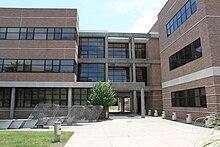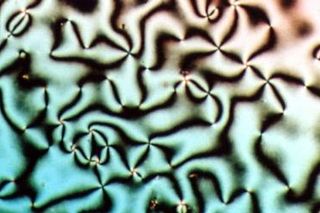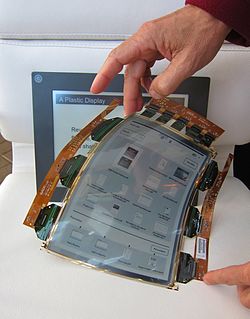
Surface science is the study of physical and chemical phenomena that occur at the interface of two phases, including solid–liquid interfaces, solid–gas interfaces, solid–vacuum interfaces, and liquid–gas interfaces. It includes the fields of surface chemistry and surface physics. Some related practical applications are classed as surface engineering. The science encompasses concepts such as heterogeneous catalysis, semiconductor device fabrication, fuel cells, self-assembled monolayers, and adhesives. Surface science is closely related to interface and colloid science. Interfacial chemistry and physics are common subjects for both. The methods are different. In addition, interface and colloid science studies macroscopic phenomena that occur in heterogeneous systems due to peculiarities of interfaces.
Ames Laboratory is a United States Department of Energy national laboratory located in Ames, Iowa and affiliated with Iowa State University. This is a top level national laboratory for new research in various domains concerning national security and resource management. The Laboratory conducts research into various areas of national concern, including the synthesis and study of new materials, energy resources, high-speed computer design, and environmental cleanup and restoration. It is located on the campus of Iowa State University.

Thermochromism is the property of substances to change color due to a change in temperature. A mood ring is an excellent example of this phenomenon, but thermochromism also has more practical uses, such as baby bottles which change to a different color when cool enough to drink, or kettles which change when water is at or near boiling point. Thermochromism is one of several types of chromism.
Helmut Ringsdorf in Gießen, Germany is a German polymer chemist. His work has promoted cross-disciplinary discussions and collaborations in the field of polymer chemistry, biology, physics and medicine. Ringsdorf's major research works deal with the self-assembly of polymers into functional aggregates, where 'the whole is more than the sum of its parts'. He is known for being the first to propose covalently bonding drugs to water-soluble polymers.
James Lee Fergason was an American inventor and business entrepreneur. A member of the National Inventors Hall of Fame, Fergason is best known for his work on an improved Liquid Crystal Display, or LCD. He held over one hundred U.S. patents at the time of his death.

Tantalum pentoxide, also known as tantalum(V) oxide, is the inorganic compound with the formula Ta
2O
5. It is a white solid that is insoluble in all solvents but is attacked by strong bases and hydrofluoric acid. Ta
2O
5 is an inert material with a high refractive index and low absorption, which makes it useful for coatings. It is also extensively used in the production of capacitors, due to its high dielectric constant.

Richard Neil Zare is the Marguerite Blake Wilbur Professor in Natural Science and a Professor of Chemistry at Stanford University. Throughout his career, Zare has made a considerable impact in physical chemistry and analytical chemistry, particularly through the development of laser-induced fluorescence (LIF) and the study of chemical reactions at the molecular and nanoscale level. LIF is an extremely sensitive technique with applications ranging from analytical chemistry and molecular biology to astrophysics. One of its applications was the sequencing of the human genome.
The Max Planck Institute for Solid State Research was founded in 1969 and is one of the 82 Max Planck Institutes of the Max Planck Society. It is located on a campus in Stuttgart, together with the Max Planck Institute for Intelligent Systems.

The Max Planck Institute for Polymer Research is a scientific center in the field of polymer science located in Mainz, Germany. The institute was founded in 1983 by Erhard W. Fischer and Gerhard Wegner. Belonging to the Chemistry, Physics and Technology Section, it is one of the 80 institutes in the Max Planck Society (Max-Planck-Gesellschaft).
George William Gray was a Professor of Organic Chemistry at the University of Hull who was instrumental in developing the long-lasting materials which made liquid crystal displays possible. He created and systematised the liquid crystal materials science, and established a method of practical molecular design. Gray was recipient of the 1995 Kyoto Prize in Advanced Technology.

Mary Lowe Good was an American inorganic chemist who worked academically, in industrial research and in government. Good contributed to the understanding of catalysts such as ruthenium which activate or speed up chemical reactions.

The Faculty of Science was founded as a Premedical School in 1958 by Prof. Dr. Stang Mongkolsuk, and took the name of Faculty of Science, Mahidol University in 1969. The Faculty is located on Rama VI Road, Phaya Thai District, Bangkok, Thailand. Currently, the Faculty consists of 13 departments: Anatomy, Biochemistry, Biology, Biotechnology, Chemistry, Computer Science, Mathematics, Microbiology, Pathobiology, Pharmacology, Physics, Physiology, and Plant Science. There are approximately 310 academic staff, with 170 being at doctoral level, 100 at Master’s level, and 40 at Bachelor’s level.

George Harry Heilmeier was an American engineer, manager, and a pioneering contributor to liquid crystal displays (LCDs), for which he was inducted into the National Inventors Hall of Fame. Heilmeier's work is an IEEE Milestone.

The Bayer School of Natural and Environmental Sciences (BSNES) is a fully accredited degree-granting institution and the primary college of undergraduate and graduate scientific research at Duquesne University in Pittsburgh, Pennsylvania. It was formed in 1994 with the separation of the Biological Sciences, Chemistry, and Biochemistry departments from the former College of Liberal Arts and Sciences, and subsequently named in honor of the Bayer Corporation. The school currently houses the departments of Biological Sciences, Biotechnology, Biochemistry, Chemistry, Environmental Science & Management, Forensic Science & Law, and Physics. The school also collaborates closely with the Duquesne University School of Pharmacy. In 2010, the department of Chemistry and Biochemistry was designated as a Mass Spectrometry Center of Excellence by Agilent Technologies, allowing for collaborative research into metabolics, proteomics, disease biomarkers, and environmental analysis. In 2011, Duquesne University became one of 98 universities nationwide, and one of nine Catholic universities, to be designated as a high research activity institution by the Carnegie Foundation.
James R. Chelikowsky is a professor of physics, chemical engineering, chemistry and at The University of Texas at Austin. He is the director of the Institute for Computational Engineering and Sciences' Center for Computational Materials. He holds the W.A. “Tex” Moncrief Jr. Chair of Computational Materials.

Mikhail Alexeevich Anisimov is a Russian and American interdisciplinary scientist.

Guest Host Displays, Dichroic Displays, Polymer Dispersed Displays
Kurt Kremer is a German physicist.
Chunni Lal Khetrapal is an Indian chemical physicist and a former vice chancellor of Allahabad University. He is known for his studies chemical physics, particularly in the field of Nuclear magnetic resonance spectroscopy. He is an elected fellow of the Indian National Science Academy and the National Academy of Sciences, India. The Council of Scientific and Industrial Research, the apex agency of the Government of India for scientific research, awarded him the Shanti Swarup Bhatnagar Prize for Science and Technology, one of the highest Indian science awards, in 1982, for his contributions to chemical sciences.
Nelamangala Vedavyasachar Madhusudana is an Indian physicist and an emeritus scientist at Raman Research Institute. Known for his research on liquid crystals, Madhusudhana is an elected fellow of Indian Academy of Sciences and Indian National Science Academy. The Council of Scientific and Industrial Research, the apex agency of the Government of India for scientific research, awarded him the Shanti Swarup Bhatnagar Prize for Science and Technology, one of the highest Indian science awards, for his contributions to physical sciences in 1989.














